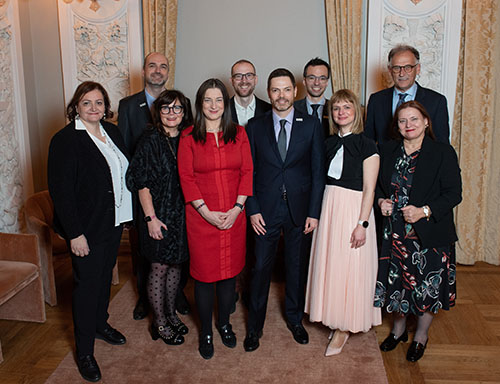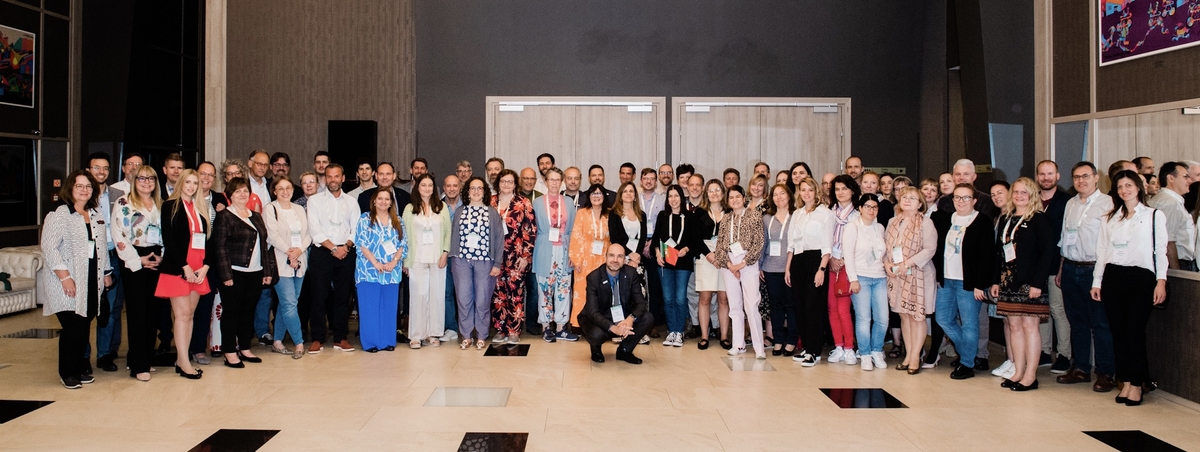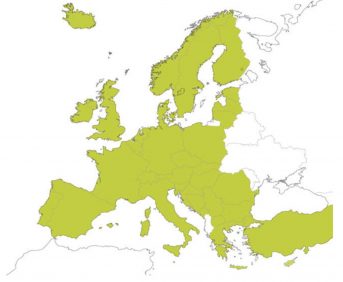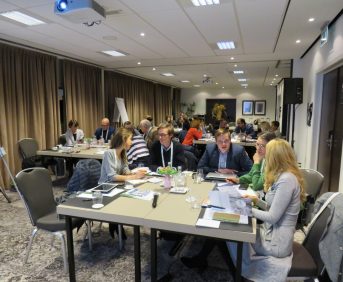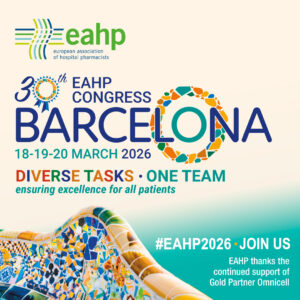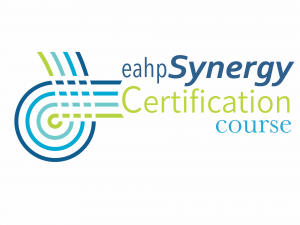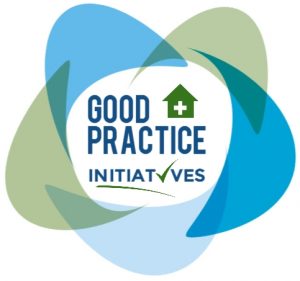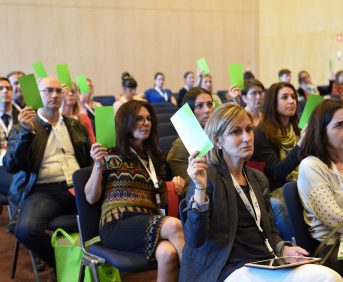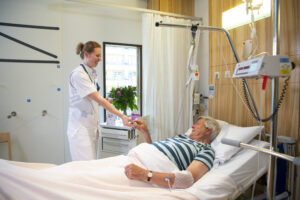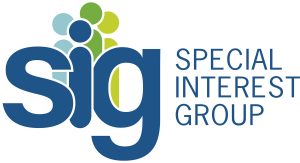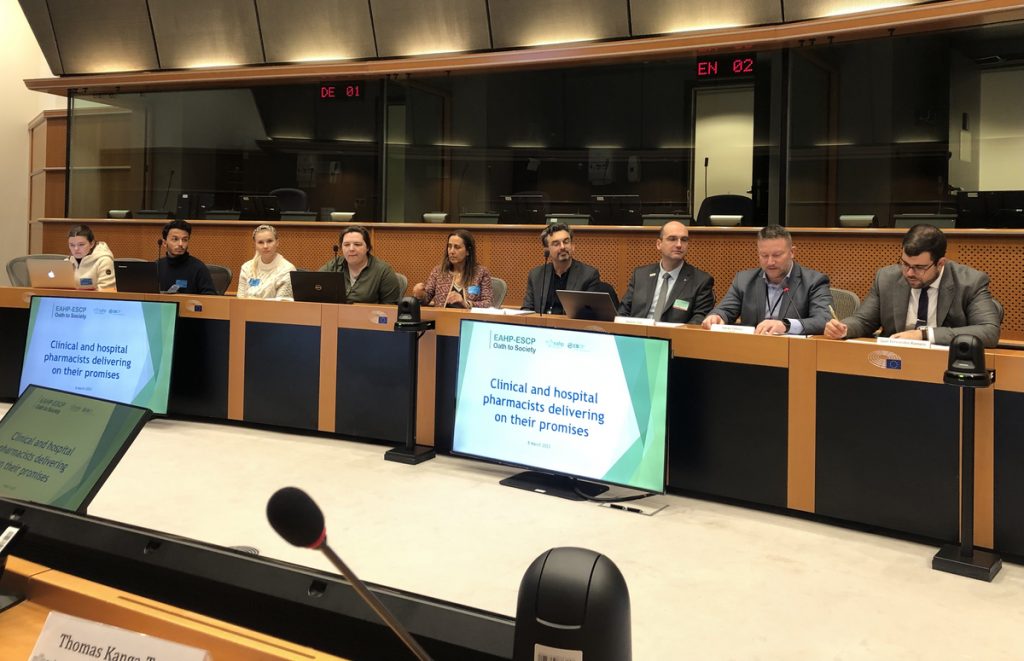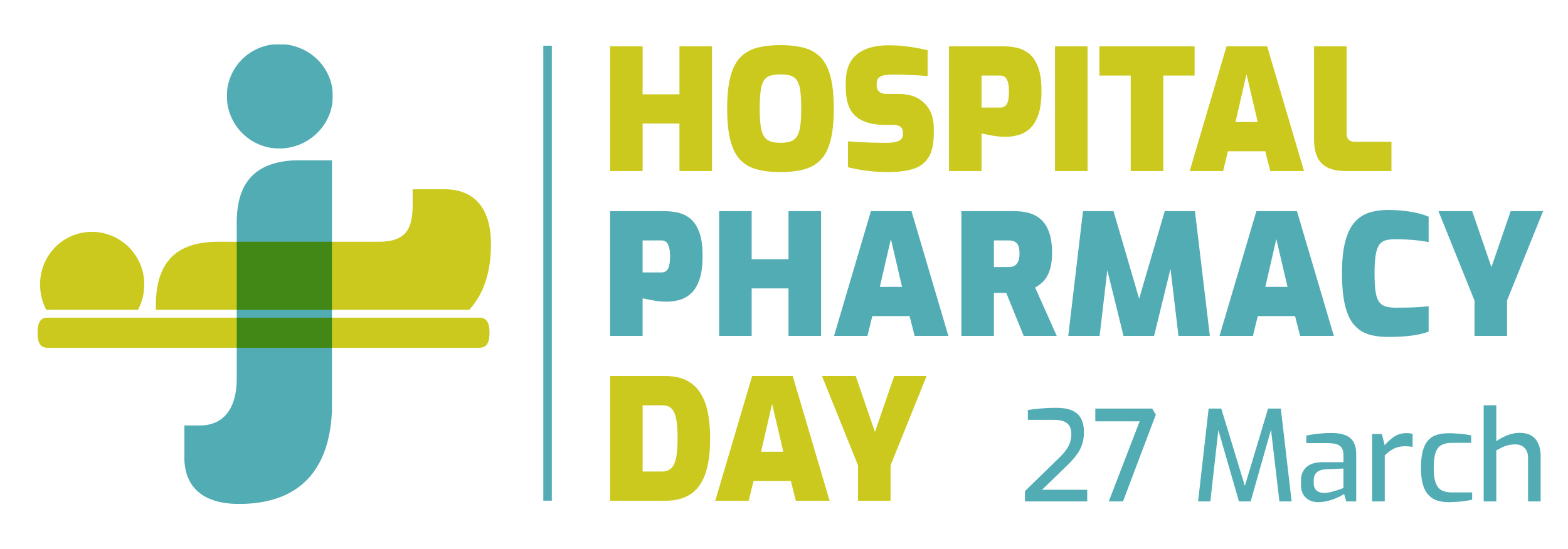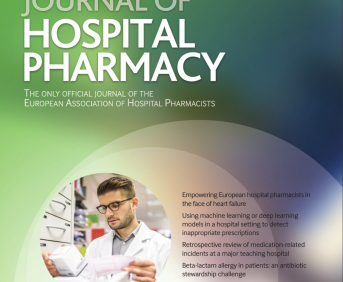DETECTION OF PHARMACOKINETIC/PHARMACODYNAMIC DRUG INTERACTIONS OR PATHOPHYSIOLOGICAL CONTRAINDICATIONS WITH INJECTABLE CHEMOTHERAPIES: IMPLEMENTATION OF THE SOFTWARE PHARMACLASS® IN ONCOLOGY
Pdf

European Statement
Clinical Pharmacy Services
Author(s)
Pauline Barreau, Joséphine Courouble, Pierre Pilven, David Vandecapelle, Thibault Stala, Geoffrey Strobbe, Guillaume Marliot, Frédéric Feutry
Why was it done?
Two prescription assistance software are using in the hospital: DXCare®, for global drug management, and Chimio®, specific to the prescription and preparation of injectable chemotherapies. Clinical pharmacists (DXCare®) and pharmacists in charge of preparation (Chimio®) carry out the pharmaceutical analysis independently and they may not detect potential pharmacokinetics/pharmacodynamics drugs interactions or pathophysiological contraindications, slowing down the pharmaceutical analysis. Pharmaclass® can improve that by crossing all data flows between DXCare® and Chimio® and alerting the pharmacist. The objective were to select and code priority alerts and evaluate the detectability of drugs interactions and pathophysiological contraindications by the software Pharmaclass®.
What was done?
Pharmaclass® is a software based on rules created by the pharmacist, from pharmaceutical algorithms. This rules engine crosses in real time all data flows of several software and sends alerts that must be analyzed by a pharmacist. It was applied in oncology for injectable chemotherapies.
How was it done?
An interface was set up between DXCare®/Chimio® and Pharmaclass® to allow the creation of requests. An analysis of drug consumptions and drugs at risk of interactions helped to select seven molecules (Methotrexate, Bevacizumab, Fluorouracil, Ifosfamide, Irinotecan, Cisplatin, Pemetrexed). A study of the summaries of the product characteristics and the drug interaction thesaurus and a bibliography was conducted and the rules were coded. These were checked by creating test patients with false prescriptions.
What has been achieved?
Eleven rules were created and, after some tests and coding readjustments, all was detected. Nine rules are about drugs interactions: three contraindications (Methotrexate/Trimethoprim, Methotrexate/Acetylsalicylic acid, Bevacizumab/Naloxegol), three associations not recommended (Methotrexate/Amoxicillin, Methotrexate/Ciprofloxacin, Fluorouracil/Antivitamin K), one precaution of use (Ifosfamide/Aprepitant) and two other rules concern enzymatic induction and inhibition of the metabolism of Irinotecan. The last two rules link the glomerular filtration rate with Cisplatin and Pemetrexed.
What next?
Following these creations, Pharmaclass® has allowed to detect drug interactions and pathophysiological contraindications that were not previously detectable. Thereafter, objective will be to establish an organization for the management of alerts and evaluate the number and the relevance of these alerts. New rules will be created for all injectable chemotherapies used in the hospital. Other center of Unicancer will be able to use these rules.
Emergency drug dispensing by pharmacist based on eprescription information system
Pdf

European Statement
Patient Safety and Quality Assurance
Author(s)
Olga Nedopilkova, Stanislav Gregor
Why was it done?
The project was created to increase quality and maintain continuity of a health care provided in the Czech Republic and to prevent any discontinuity which could endanger the patient. Emergency dispensing of a drug is enabled by new functionality which is the patient’s drug record (PDR) which was only launched in the CZE in June 2020. Last but not least it is about expanding existing competencies of pharmacists and strengthening pharmacists’ position in the healthcare system.
What was done?
The Association of Young Pharmacists, with support of the Czech Chamber of Pharmacists, created a project which is focusing on a possibility of dispensing a chronically used prescription drug in case a patient cannot obtain a prescription for various reasons (“emergency dispensing of a drug”). In hospital pharmacies in the Czech Republic (CZE), it is possible to dispense medicines to the public. A concept has been developed that describes all the essentials that must be followed.
How was it done?
A project proposal describing specific situations when the pharmacist can proceed to emergency dispensing, rules of the actual implementation and also cost analysis has been prepared). A search for experience from abroad has been conducted as well. Subsequently, a survey among pharmacists was conducted. The purpose of the survey was to determine whether pharmacists are interested in this competence and have comments on it. Then a comprehensive concept was submitted to the Ministry of Health. Specific legislative changes will now be needed.
What has been achieved?
Among pharmacists in the CZE, a considerable agreement was reached with the draft. According to the survey 94% of pharmacists agree with the prepared proposal, 3.2% disagree, and the remaining 2.8% agree with minor modifications to the request. Furthermore, we managed to develop a concept that describes detailed conditions for dispensing drugs in emergency mode. The concept was submitted to the Ministry of Health, with which the details of this proposal will now be gradually negotiated.
What next?
This project represents only one of the new competencies that pharmacists could achieve. We want to follow up on this step with another project that would enable pharmacists to prescribe chronically used drugs under specific conditions even outside emergency situations.
MANAGING THE RISK OF MEDICATION ERRORS: A MULTI-DISCIPLINARY CONTINUING PROFESSIONAL DEVELOPMENT PROGRAMME
Pdf

European Statement
Education and Research
Author(s)
Elodie Delavoipière, Marianne Pavard, Anne-Laure Richard, Julien Montreuil, Albane Cherel, Céline Bouglé
Why was it done?
Every year in our country, 10,000 preventable deaths and more than 130,000 preventable hospitalizations are related to drug misuse. This issue is a priority of the national health strategy. Therefore, we developed a CPD training program on the issues and methods of managing the risk of ME.
What was done?
A regional multi-disciplinary Continuing Professional Development (CPD) program was developed, dealing with the risk management of medication errors (ME).
How was it done?
This program was submitted to the National CPD Agency and accepted as a continuing education measure, corresponding to the national orientation: “control of risks associated with healthcare acts and pathways”. The program and the training materials were developed by a 13-member regional working group, including hospital pharmacists and quality managers, the drug observatory and the regional health quality network.
What has been achieved?
The training is intended for any health professional involved in the medication circuit in a health or medico-social institution: physicians, pharmacists, residents, nurses, pharmacy technicians… The first part is an e-learning slide presentation with voice commentary, on the theoretical aspects of ME and on the principles of a priori and a posteriori risk management. Concrete examples of ME are integrated throughout the slide presentation. This e-learning is divided into 4 parts and is accessible for 1 month. It must be validated by the learner before participating in the second part of the training: a face-to-face simulation session with 15 learners and 2 hospital trainers (pharmacist and health quality professional). During half a day, the learners apply a posteriori risk management by analysing a fictional adverse event (ME). The case addresses several themes: never events, drug reconciliation, city-hospital link, lack of communication, human factors. Questionnaires completed before, during and after the training allow for the evaluation of learners’ satisfaction as well as the impact of the training on their knowledge and skills.
What next?
This regional training will promote the link between actors from different institutions and the multi-disciplinary approach around the management of the risks of ME. In addition, we provide an awareness kit on ME reporting, including a customizable slide show and a quiz, which allows short sessions to be conducted in any health facility.
AN OBSERVATIONAL MULTICENTRE STUDY TO PROMOTE INDEPENDENT CLINICAL RESEARCH AND EDUCATION TO YOUNG HOSPITAL PHARMACISTS: THE QOSMOS PROJECT (submitted in 2019)
Pdf

European Statement
Education and Research
Author(s)
Daniele Mengato, Federica Milani, Laura Agnoletto, Nicoletta Freddi, Roberta Rampazzo, Vera Damuzzo, Nicola Realdon
Why was it done?
Recently, the national monitoring of Hospital Pharmacy Students (SHP) highlighted a lack of education in clinical research and in designing of independent studies among students. To fill this gap, we established a collaboration between Scientific Associations and Student Organisations.
What was done?
In 2017 the Italian Society for Clinical Pharmacy and Therapeutics (SIFaCT) and the National Association of Hospital Pharmacy Students (ReNaSFO) established a join action to improve students’ research competencies. To this end, we designed the QOSMOS study: “Quality Of life (QoL) in Multiple Sclerosis (MS): a Multicentre Observational Study”.
How was it done?
The study has both educational and scientific objectives. Scientific objectives were to update data on QoL in MS and to correlate QoL to drug therapy. Regarding the educational challenge, every SHP participant received, by a panel of expert colleagues, the methodologic basis on observational studies and how to arrange teamwork activities. SHP could participate either as co-investigators or as members of teams which managed ethical approval, case report form (CRF), study monitor and data analysis. Investigators enrolled patients, collected clinical data and administrated a CRF, consisting of a questionnaire on QoL (MSQoL54).
What has been achieved?
22 SHP from 16 Italian centres, equally distributed from Southern to Northern Italy, joined the project. 20 SHP participated as co-investigators, one was included in the Scientific Committee of the study and 1 participated in the team dedicated to the Ethical Committee. We enrolled 341 patients with relapsing/remitting MS from May 2018 to June 2019 (median=20 per centre). The study achieved primary and secondary endpoints and pointed out a significant decrease in QoL related to physical health in patients treated with teriflunomide compared to other oral drugs (p=0.002).
What next?
Results will be presented in a scientific paper for submission to a peer-reviewed journal. This final aspect of the project has an educational goal once again, namely to bring young colleagues closer to writing and disseminating science. As QOSMOS gained good results, a new study investigating the role of clinical pharmacist in the Infectious Disease Department is starting with the goal to investigate optimisation strategies for treatment of HIV-positive patients.
ROUTE TO CLINICAL PHARMACY: THE EXCHANGE PROGRAMME EXPERIENCE (submitted in 2019)
European Statement
Clinical Pharmacy Services
Author(s)
Chiara Inserra, Antonio Solinas, Chiara Panciroli, Branden Nemecek, David Zimmerman, J.Douglas Bricker, Piera Polidori
Why was it done?
Successful implementation of clinical pharmacy services are associated with improved prescribing practices. SIFO includes clinical pharmacy in their mission to line up with Section 4 of the European Statement on Hospital Pharmacy and is striving for implementation through advanced trainings for IHPs. The aim of this EP was to provide real world clinical pharmacy training to IHPs.
What was done?
Through international collaboration between Duquesne University School of Pharmacy in Pittsburgh (PA-USA) and the Italian Society of Hospital Pharmacy (SIFO) a clinical pharmacy exchange programme (EP) was established to provide clinical education to Italian pharmacists interested in advancing the profession. From 2010 to 2018, SIFO provided several grants to allow Italian hospital pharmacists (IHPs) to participate. In 2018, three IHPs from across Italy were selected for a 1 month experience to gain experience and insight into practices that they may use in their facilities.
How was it done?
The clinical training was created by Duquesne University to provide IHPs educational and first-hand clinical skills based on American clinical pharmacy practice and education. The training was individualised for IHPs’ interests including didactics and practical training. Sessions to discuss IHPs’ progress were conducted with the Dean and faculty of the programme.
What has been achieved?
IHPs had the chance to observe American pharmacy education and compare it to the Italian one. American university training was practical, well-coordinated with clinical activities, and based on a trustful teacher-student relationship. During practical training IHPs shadowed American Clinical Pharmacists (ACP) specialized in different areas: Infectious Disease, Cardiology, Oncology, Emergency Medicine, Internal Medicine, Community Pharmacy, Ambulatory Care. They were able to observe how ACPs validate prescriptions and are actively engaged in direct patient care, participating in bedside multidisciplinary rounds and making recommendations on therapies (drug interactions, dose adjustments, antibiotic selection). IHPs saw how technology investments, prioritisation of care, and availability of skilled personnel underlie American hospital pharmacy practice.
What next?
IHPs gained baseline clinical pharmacy skills to enhance care at their facilities; however, the widespread implementation of clinical pharmacy in Italy requires education reform, enhanced resources and integration of pharmacists within a multidisciplinary team. Implementation of small projects through collaboration with universities should be considered in the Italian hospital setting.
JOINT PROCUREMENT: LEARNING FROM A PILOT OF JOINT PROCUREMENT OF OLDER PRODUCTS (submitted in 2019)
Pdf

European Statement
Selection, Procurement and Distribution
Author(s)
Helle Pasgaard Rommelhoff, Lise Grove, Dorthe Bartels, Trine Ann Behnk, Lars Ole Madsen
Why was it done?
To share learning from a pilot of procuring pharmaceuticals jointly across borders in three European countries as well as post-learning on planning and execution elements in order to have a successful joint procurement.
What was done?
Three European countries decided to implement a joint procurement pilot in order to seek solutions for some of the supply issues in the three markets. This was a consequence of being a small volume market with potentially limited attractivity for suppliers of older products. An initial evaluation of synergies and discrepancies among the involved countries supported the understanding of how to jointly procure medicines for the hospital sector.
How was it done?
The visualised model of a product lifecycle was applied to understand where a pilot of joint procurement would support the supply issues of the older products. This led to a shared understanding between the countries on where the supply issues may occur and potential solutions. An evaluation of building the joint procurement process, which took approximately 2 years, is now available as a best practice with “Do’s and Don’ts” for other countries with joint procurement interest. Criteria in the tenders announced were either price alone or in combination with. One of the tenders included a mandatory bid for all 3 markets, the rest of the tenders were mandatory for 2 of the markets with optional submission for the 3rd market. This was an outcome of hearings with suppliers. The feedback from the hearings was modifying the tender materials into a new proposal for suppliers. A political framework was signed between the countries to have a shared fundament to build on.
What has been achieved?
The final outcome of a joint procurement was evaluated. Evaluation of the submission and preparation part showed that the majority of joint tenders had an efficient competition on price with a representative amount of suppliers bidding. It also shown that it was vital to have collaboration and to listen to stakeholders in order to have a robust insight on what was possible for all involved parties. The thorough preparations supported the process and the final outcome. There was dual engagement between the stakeholders and transparency on the wish from countries to overcome barriers and conduct joint procurement to support supply issues.
What next?
Efficient and timely planning is crucial. Collaborations between the involved stakeholders are important. Mutual understanding of the interests and strategy is helpful in building a shared view on the problems and potential solutions. It is seen as essential, when planning joint procurement, to include logistic thinking already in the early tender planning phase.
FOUR YEARS OF A REGIONAL MEDICINES OPTIMISATION INNOVATION CENTRE – WHAT HAS BEEN ACHIEVED? (submitted in 2019)
Pdf

European Statement
Introductory Statements and Governance
Author(s)
Michael Scott, Glenda Fleming, Catherine Harrison
Why was it done?
There is a wide recognition that there are significant issues with regard to the issue of medicines, such as the fact that 30−50% of medicines are not taken as required. Thus the DoH decided to set up MOIC as a vehicle to focus activities in order to address this issue and optimise medicines use.
What was done?
A Regional Medicines Optimisation Innovation Centre (MOIC) was set up in 2015 by the Department of Health (DoH) in Northern Ireland as a key enabler for the Government policy document namely the Medicines Optimisation Quality Framework.
How was it done?
The DoH requested the Northern Health and Social Care Trust to locate the centre within the Trust based on the fact that there had been a long standing academic practice centre with the School of Pharmacy at Queens University of Belfast. Barriers that had to be addressed were highlighting the regional nature of the centre, to get engagement with all sectors of the service and building relationships with other key organisations, including the private sector. Initial core funding was provided by the DoH.
What has been achieved?
MOIC has successfully evaluated improved systems with regard to hospital pharmacy such as doctor-light discharge (90 minutes faster), post-discharge telephone follow-up (30 day readmission rate reduced by 9.9%), and medicines optimisation in older people service in care home settings (reduced Emergency Department attendances and medicines costs). In addition MOIC has been successful in 3 EU funding bids relating to medicines optimisation and has published over 30 papers. It has also been accredited as a Statement Implementation Learning Collaborative Centre (SILCC) site and also a Centre of Excellence by the Spanish Hospital Pharmacists Association. MOIC has also successfully worked with the private sector including pharmaceutical, device and technology companies. It has also been accredited as a knowledge provided by Invest NI.
What next?
MOIC has delivered on its key initial objectives, related to medicines optimisation with good collaborative work across health, academia and commercial organisations, in the UK and Europe. It will have a key role in meeting the WHO Global Challenge of reducing medication-related harm by 50% by 2023 for the region and further optimising medicines systems.
This approach with government policy support could be relatively easily established in any other region.
IMPLANTATION OF A COMMUNICATION CIRCUIT OF ALERTS AND SAFETY NOTES RELATED TO DRUGS FROM THE PHARMACY DEPARTMENT (submitted in 2019)
Pdf

European Statement
Patient Safety and Quality Assurance
Author(s)
Ignacio García Giménez, Natalia Martín Fernández, Olalla Montero Pérez, Ernesto Sánchez Gómez, Isabel María Carrión Madroñal
Why was it done?
The aim is to implement a protocol to follow when these safety notes/alerts are released from the AEMPS. It comprehends the reception of the information, its registration and its communication, when needed, to the rest of the healthcare professionals.
What was done?
A communication circuit of alerts and safety notes related to drugs coming from the “Agencia Española de Medicamentos y Productos Sanitarios (AEMPS)”.
How was it done?
At the reception of an alert from the AEMPS, the first step is to check if the drug has been acquired by the Pharmacy, and then act in accordance with the recommendations, informing the Departments in which the medication had been dispensed. If a drug must be retired and a stock break is generated, the healthcare professionals must be informed as well. Security notes from the AEMPS are published in the local hospital website, where the documents sent by the AEMPS can be found. If this medication is included in the Pharmacotherapeutic guide, a notification is shown when it is prescribed. Finally, all alerts and security notes, with the pharmacist intervention, are registered in a database.
What has been achieved?
Since the implementation of the circuit, 14 alerts and 9 security notes were sent from the AEMPS in a period of 6 months. No interventions regarding the alerts were needed. Healthcare professionals were informed when the security notes were released, pointing to the patients at risk, the precautions required and the alternative therapies available.
What next?
To incorporate it as an indicator of quality of care within the procedures performed by the pharmacy department and detect areas of improvement.
INCLUSION OF PHARMACY STUDENTS IN AN INTERPROFESSIONAL TRAINING WARD PLACEMENT FOR HEALTHCARE STUDENTS IN SWEDEN (submitted in 2019)
Pdf

European Statement
Education and Research
Author(s)
Matts Balgård, Maria Swartling, Srebrenka Dobrić, Lena Klarén, Lina Karlsson
Why was it done?
ITWP for healthcare students is established at various teaching hospitals. However, to our knowledge, no such programme in Scandinavia has included pharmacy students. Clinical pharmacy is a growing profession in Sweden and other healthcare students will in the future work alongside clinical pharmacists. Therefore we set out to add pharmacy students to the ITWP team, believing that it would be a valuable experience for them to collaborate and share knowledge with students from other healthcare professions. Equally important, it is a way to promote the pharmacist’s competence and contribution to the multiprofessional healthcare team, prior to graduation.
What was done?
Final year undergraduate pharmacy students, specialising clinical pharmacy, were given the opportunity to spend two weeks of their six months pharmacy practice to participate in an interprofessional training ward placement (ITWP) together with medical, nursing and physiotherapy students. During this two-week clinical placement, the students were collaboratively responsible for managing the care of geriatric inpatients while under supervision of licensed practitioners.
How was it done?
A working group was formed consisting of teachers from the faculty of pharmacy, a student representative and a working clinical pharmacist. The group developed the initiative, including among other things, prerequisites, an evaluation plan, a workflow tool for clinical rounds, and suggested tasks for pharmacy students during the placement.
What has been achieved?
The programme has been running for three semesters and 6–8 pharmacy students have participated in the ITWP each semester. The initiative has been evaluated using surveys. Participating pharmacy students expressed gaining new knowledge and better insight into nursing care and the roles of the other professions. Nursing students appreciated the support in medication management and medical students found the pharmacy students to be valuable discussion partners that could challenge their drug-related decisions. Tutors expressed that the pharmacy students brought a beneficial dynamic to the ITWP team.
What next?
The opportunity for students from different professions to work together with a common objective in a real-life setting gives them valuable insight into each other’s professional roles early in their careers. This good practice initiative could be used in other interprofessional training ward placements wishing to involve pharmacy students.
PHARMACEUTICAL ALGORITHMS TO PERFORM MEDICATION PHARMACEUTICAL ANALYSIS (submitted in 2019)
Pdf

European Statement
Patient Safety and Quality Assurance
Author(s)
Arnaud Potier, Béatrice Demoré, Alexandre Dony, Emmanuelle Divoux, Emmanuelle Boschetti, Laure-Anne Arnoux, Cédric Dupont, Jean-Christophe Calvo, David Piney, Virginie Chopard, Nathalie Cretin, Edith Dufay
Why was it done?
Drug iatrogenia costs global health systems $52 billion annually. The third global patient safety challenge aims at reducing the global burden of iatrogenic medication-related harm by 50% within 5 years [1]. Pharmaceutical analysis is a fundamental activity, a regulatory obligation in many countries but remains a challenge. This practice is highly variable. A graphic definition of the target pharmaceutical analysis has been formalised in December 2017 which sets the basis for its digitalisation, effectively implemented since January 2019. The aim is to build a corpus of the most relevant PA to facilitate clinical pharmacist practice.
What was done?
A computerised clinical pharmacy tool is integrated into the health information system of our group of hospitals (5000 beds) to promote efficiency of pharmaceutical analysis in order to improve patient safety. Pharmaceutical algorithms (PA) are conceptualised to improve drug related problems (DRP) detection and their resolution through pharmaceutical intervention (PI) according to a defined conduct to be held: anamnesis of subjective and objective elements of appreciation, DRP characterisation and PI transmission. Pharmaceutical analysis is performed by the use of PharmaClass® (Keenturtle). This software has been interfaced with 5 health data flow of two health facilities (1000 of the 2000 beds were tested): identity and patient flow, medication data, laboratory results examination, medical history, physiological constants. PA are partially encoded as rules in Pharmaclass® that issues alerts analysed by a pharmacist.
How was it done?
Health data are lacking of semantic interoperability which Pharmaclass® aims at overcoming from Electronical health record (EHR) queries in real time. A corpus of PA has been structured integrating the conduct to be held. PA were created by modeling the pharmaceutical experiment with the thread of criticality. PA were validated by consensus.
What has been achieved?
80 PA were encoded into Pharmaclass®: 40 are targeting serious adverse drug events. 1516 alerts were analysed and 539 PI transmitted during the 9-month test period.
What next?
This practice is applicable to any pharmaceutical analysis that uses data from an EHR. Clinical pharmacy societies should host and take care of updating corpus of PA. Its educational interest should be exploited. A European interest group for artificial intelligence in clinical pharmacy is being created.
